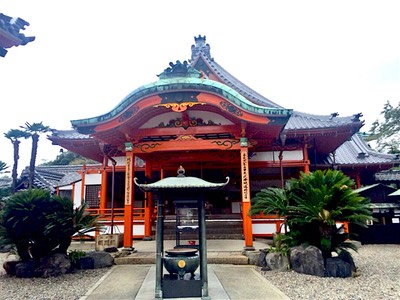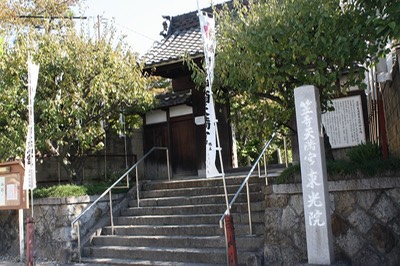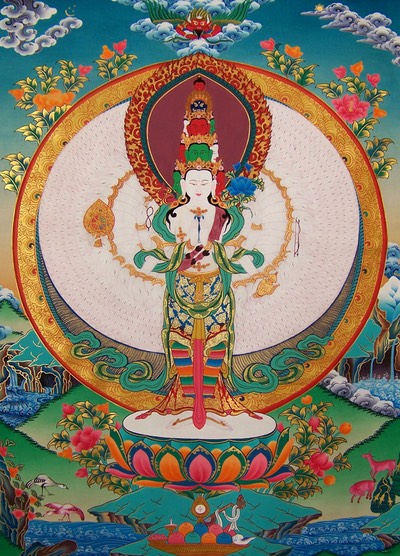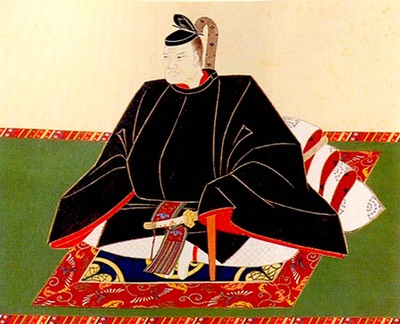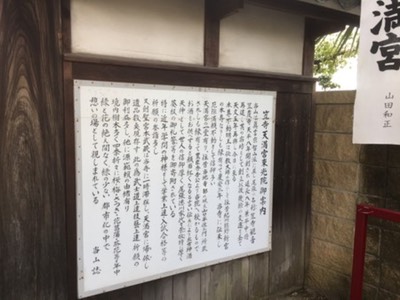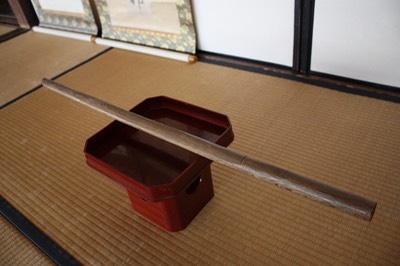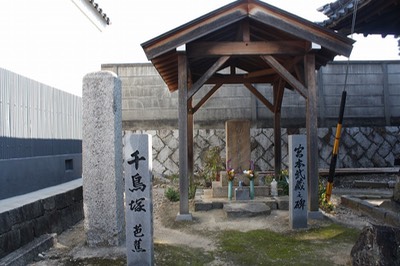During one of his visits to Nagoya Musashi is believed to have stayed at the Tōkōin, one of the twelve lodgings for priests of the Ryūfukuji, an old temple in the town’s southern quarters that dated back to the eighth century.
Better known as the Kasadera Kannon, the temple is was founded in 733 by a monk named Zenkō when he carved an image of the Jūichimen Kannon, the bodhisattva with eleven faces, from a piece of driftwood from the nearby river.
According to one anecdote, the temple was visited toward the end of the ninth century by Fujiwara Kanehira (875–935), a man whom Musashi would have considered his distant ancestor. A Heian court official and a renowned player of the biwa, he had come to pay homage to the Jūichimen Kannon. The rain season had started and it was pelting down when to his dismay he found that the roof of the building in which the relic was housed had long since collapsed.
It was only when he entered the dilapidated structure that he spotted a young woman, holding up an umbrella to protect the withered kannon from the raging elements. Touched to his poetic core, he had taken her back to the capital, given her the name Ōshōhime, and married her. From then on the temple was popularly known as the Kasadera (笠寺), the Umbrella Temple.
While staying at the Tōkōin, Musashi was invited by Tokugawa Yoshinao (1601–50), the daimyō of Owari (the fief of which Nagoya castle was the headquarters, to give a demonstration of his art of swordsmanship in a duel in Yoshinao’s presence. The Mukashibanashi describes how:
相手すつと立合うと、武蔵、組たる二刀のまま、大の切っ先を相手の鼻の先へつけて、一間の内を一遍回し歩きて、勝負かくの如くに御座候と、申し上げし。
When his opponent suddenly opened the attack, Musashi crossed his two swords, training the tip of his long sword on the tip of his adversary’s nose, thus steadily forcing the latter backward until they had traced the circumference of the whole dōjō, and said “this is the way in which I fight duels."
One of the artifacts still kept by the temple today is a bokutō crafted by Musashi during his stay at the temple. More important is a calligraphy from Musashi’s hand. Believed to have been drawn by the swordsman as a token of gratitude to the temple’s abbot, it carries the words namu Tenman Daijizai Tenjin, an old text expressing reverence to another great Heian court official, Sugawara no Muchizane (Tenman Daijizai Tenjin). Michizane was a famed poet-scholar, whose life had taken a tragic turning when he was unjustly exiled to Kyushu.
Today one can still visit a memorial stone in the temple’s cemetery commemorating Musashi's death by his followers in Nagoya. It was erected in 1744 by Sōda Hōsei, the fifth-generation practitioner of Musashi’s Enmei-ryū in Owari.
Any queries of remarks? Launch or join a discussion at our new FORUM
